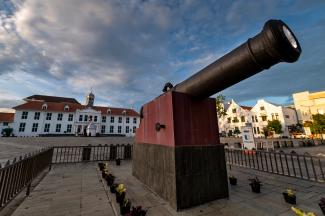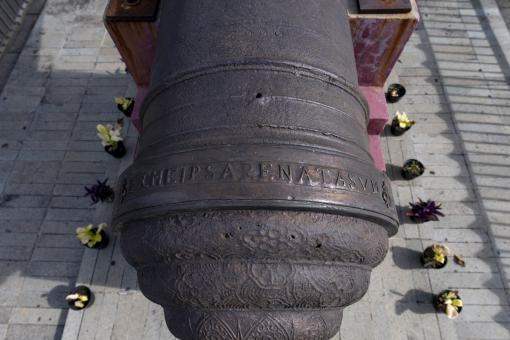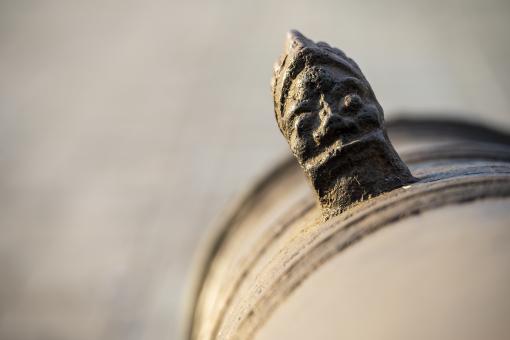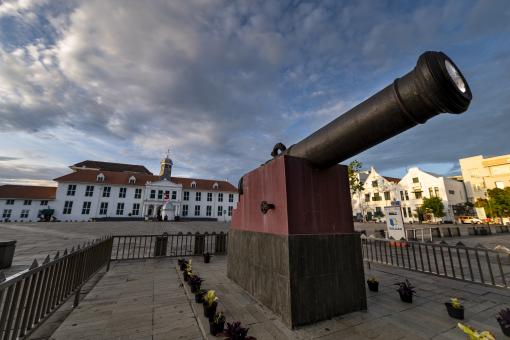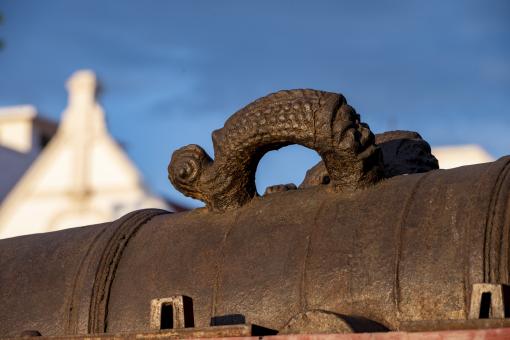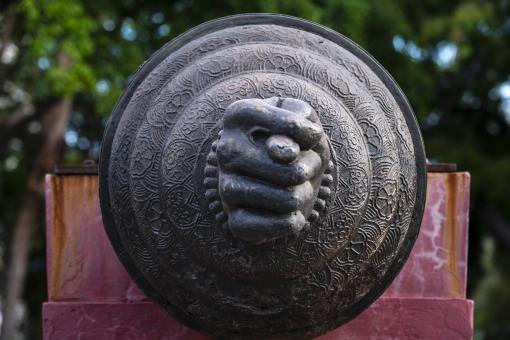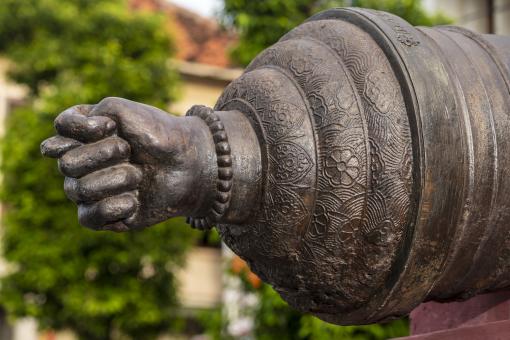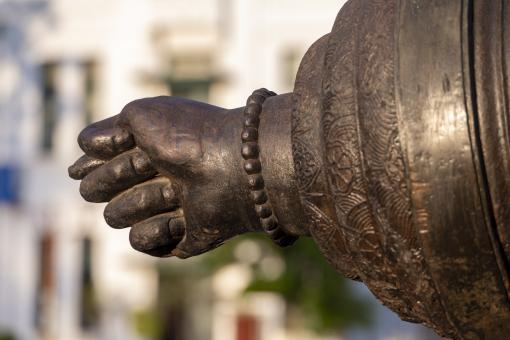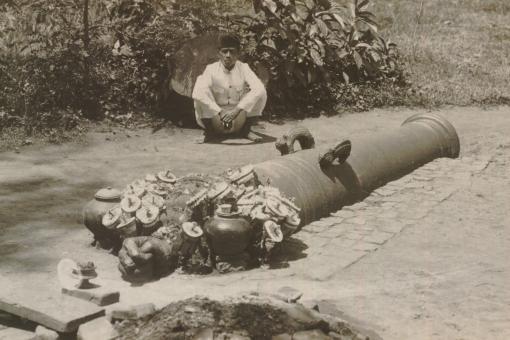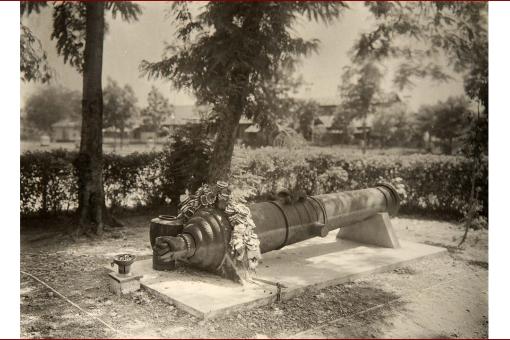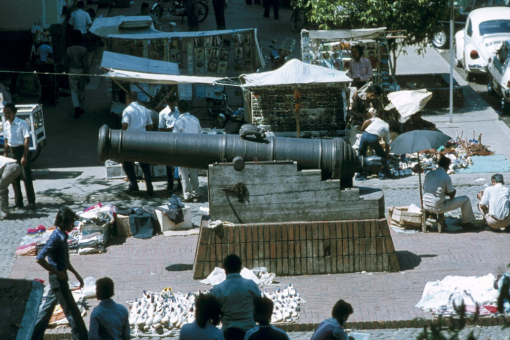The Si Jagur cannon has a long and interesting history and has moved across the region from Macau to Melaka, and finally to Batavia (present day Jakarta). The cannon was built in 1625 by Portuguese-born engineer Manuel Tavares Bocarro in Macau. It was smelted from 16 small cannons and weighs 3.5 tons. The end of the cannon features a thumb wedged in between two fingers, an obscene gesture from the time that was used to insult enemies.
Abandonment and rediscovery
The Portuguese moved the cannon to Melaka to strengthen the defences of the city against the Dutch. In 1641, Melaka was captured by the Dutch, and the cannon was taken to Batavia, where it was placed in the Batavia Castle (Kasteel Batavia). It remained there until 1809, when Batavia Castle was dismantled, and the cannon was abandoned.
The cannon was rediscovered in the 20th century and became an important object for the people of Jakarta. A popular belief was that it had special powers and could help with fertility, and offerings of flowers and incense (sesajen) were often placed at the cannon. In 1974, Si Jagur was transferred to Jakarta History Museum and now sits in the square in front of the museum, where it is a popular attraction.
Curators from the Jakarta History Museum share the significance of the Si Jagur cannon held in the museum’s collection
